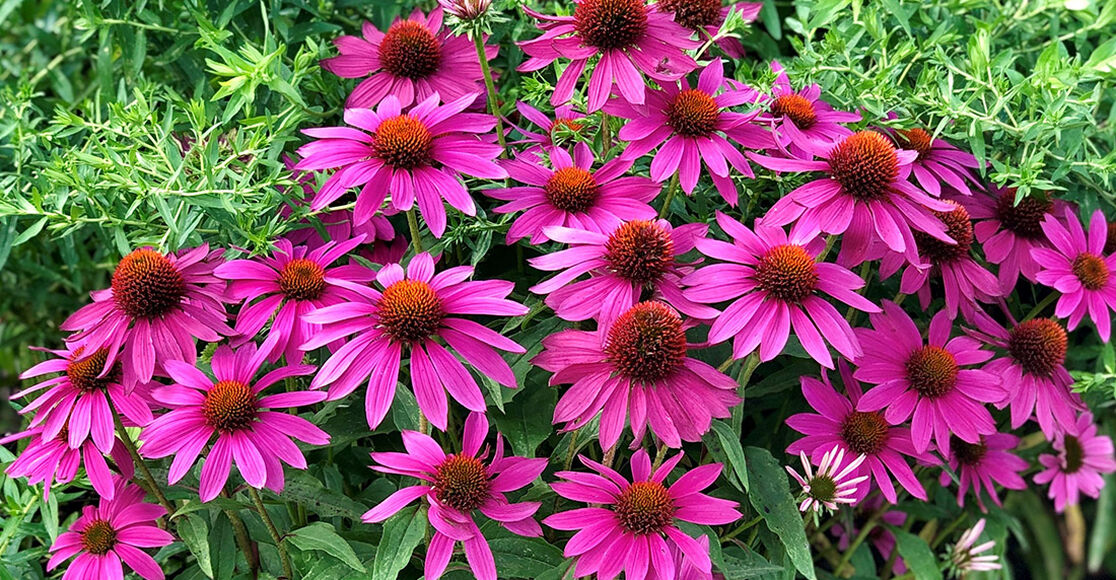Niki Jabbour
A shady garden provides a challenge to the gardener. Hosta have become the poster plant for shady spaces. And while I love my various hosta cultivars, I’m happy to say that there are MANY other perennials and shrubs that thrive in less light.
Shady spaces can be divided into two categories: partial shade or full shade. Partially shaded gardens may get up to half a day of sun each day, while fully shaded spaces get no direct sun at all. There are plants to suit each type of shade so before you head to the nursery, take a good look at your garden to see how much light it actually receives.
Fern-leaf bleeding heart (zones 3 to 9)
This spring bloomer is a North American native and ideal for partial to full shade. It has blue-green ferny foliage and deep pink or white flowers that emerge in spring and bloom on and off all summer long. It’s bothered by few pests or diseases and is even deer-resistant!
Astilbe (zones 3 to 8)
Astilbe are the solution to gardeners who want bold, bright colour in shady sites. This hardy perennial produces feathery plumes in a wide selection of beautiful colours including red, fuchsia, pink, white, and purple. The flower show begins in mid-summer and lasts for about a month. The attractive foliage provides spring, summer and autumn interest with some cultivars having bronze or reddish leaves.
Siberian Bugloss (zones 3 to 8)
Siberian bugloss is a workhorse in partially shaded sites with large heart-shaped leaves and dainty blue flowers. The blooms resemble forget-me-nots and flower for weeks each spring. Use it to create a ground cover beneath tall trees, or along woodland pathways.
Celandine poppy (zones 4 to 9)
I’ve had a large clump of Celandine poppies in my front semi-shaded perennial garden for over ten years. The leaves emerge early in spring and are soon followed by sunny yellow flowers that light up my partially shaded garden for several weeks. Note that it self seeds easily and can spread around a garden. I’ve planted it in a site beneath tall deciduous trees where it can happily roam.
Oakleaf hydrangea (zones 5 to 9)
Oakleaf hydrangea is a four-season shrub essential for partial shade. In spring, the deep green, oak-leaf shaped leaves emerge. In summer, large-cone-shaped flowers appear, eventually maturing to deep pink and lasting for months. In autumn, the foliage turns dark reddish-burgundy. Once the leaves fall in late autumn, the exfoliating reddish-brown bark offers interest. Popular cultivars include ‘Snow Queen’, ‘Snowflake’, and ‘Alice’.
Vernal witch hazel (zones 5 to 8)
Witch hazel is a shrub prized among Canadian gardeners for its ability to bloom in winter. Yes, winter! Vernal witch hazel (Hamamelis vernalis) flowers in late February with the blooms lasting almost a full month. Common witch hazel (Hamamelis virginiana) is also popular and flowers in mid to late autumn. Plant Vernal witch hazel in partial shade and where the winter flowers can be appreciated. It makes a wonderful specimen tree, only growing about ten feet tall at maturity.
Japanese pieris (zones 5 to 8)
Also called Andromeda, this lovely shrub can grow up to six feet tall at maturity and is resistant to deer. Each spring, large clusters of white, bell-shaped blooms emerge, enticing bees and gardeners with their soft fragrance. For added interest, pick a cultivar like ‘Mountain Fire’ that has bright red new growth that emerges in spring.
PJM Rhodendrons (zones 4 to 7)
On the east coast, rhododendrons are an essential landscape shrub, especially beneath deciduous trees. They love our acidic soil, but they can also tolerate slightly acidic or almost neutral soils. Many rhododendrons are evergreen with leaves persisting year-round. In spring the large flower clusters open and provide several weeks of showy colours in shades of red, purple, pink, and white. Best in partial shade where they still receive three to four hours of light each day.
